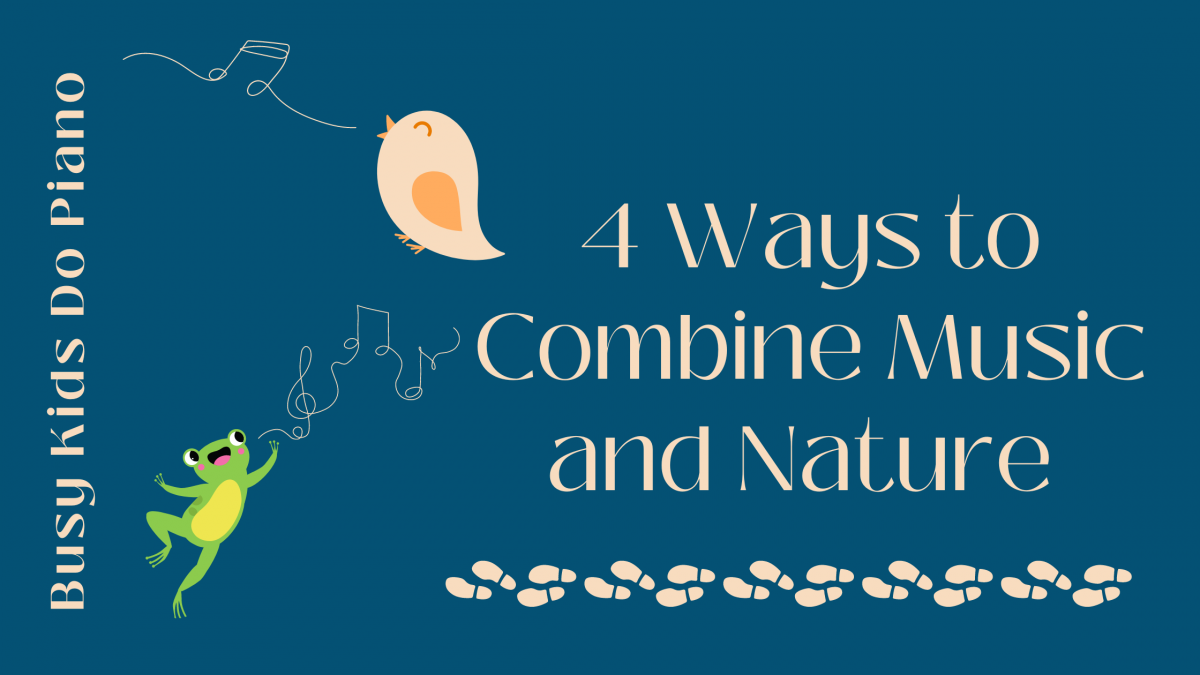We are in that sweet spot of seasons—spring becoming summer—and it’s time to get outside. With most kids out of school, there’s a perfect opportunity to embrace the outdoors. But stepping outside doesn’t mean your student’s music education has to stop. In fact, it can thrive! Today, I’m excited to share four fun games that beautifully combine nature and music learning in the form of musical nature walks. Perhaps you can choose one per week for the next four weeks as an enriching exercise. Let’s dive in!
Birdie Sing-Along
One of the most delightful sounds of nature is birdsong, especially in the mornings and evenings. Here’s a game to engage with these natural melodies:
– Listen: Start by simply listening to the birds. Can you identify any musical intervals in their songs?
– Imitate: Try playing the birdsong on the piano. If you don’t have a piano, you can just imitate the song vocally or with a whistle.
– Mimic: Pretend you are a bird and sing or whistle the tune back after playing or hearing it.
This game helps develop pitch recognition and musical memory, all while enjoying the serene ambiance of a natural setting.
Instrument Scavenger Hunt
Turn a simple walk into a musical adventure with this scavenger hunt:
-Explore: Take a walk with a pencil and notebook in hand. List all the musical sounds you hear—frogs croaking, birds chirping, a bubbling stream, wind rustling leaves, or even the crunching of your feet on the ground.
– Identify: Once you have your list, think of musical instruments that could mimic these sounds. Did you find something that sounded like a flute, a piano, a drum, maracas, or a rain stick?
This activity sharpens listening skills and encourages kids to draw connections between natural sounds and musical instruments.
Rhythm Roaming
Nature is full of rhythms waiting to be discovered. Here’s how to find them:
– Discover: As you walk, pay attention to the different rhythms around you. Can you hear the rhythm of a frog’s croak? How about the waves crashing on the shore, a woodpecker tapping, or a dog barking?
– Transcribe: Try to transcribe these rhythms onto a musical staff. Your own footsteps are a great starting point—experiment by walking differently to create various rhythms: skip, jump, or tiptoe.
Rhythm Roaming fosters a sense of timing and rhythm, integral components of musical training.
Creature Composer
Unleash your inner composer with the sounds of nature:
– Listen and Reflect: Go on a walk and listen carefully to the sounds around you. What do you hear that you like? Why does it catch your ear? Is it a happy or sad sound? Quick or slow?
– Compose: Take notes and later, at home, compose a song or melody inspired by what you heard. For added fun, perform your nature-inspired piece for a family member.
This game encourages creativity and helps young musicians understand how different sounds and emotions can inspire musical compositions.
Final Thoughts
As you venture out this summer, keep your ears open! Your students are always listening, so help them tune into the wide variety of melodies and rhythms in their environment. These musical nature walks are not only fun but also educational. Don’t forget the sunblock, and happy exploring!



